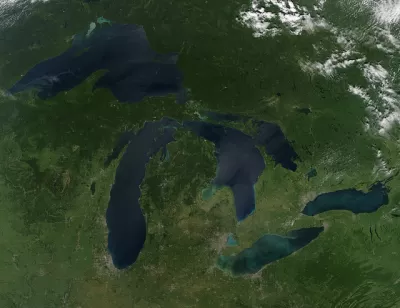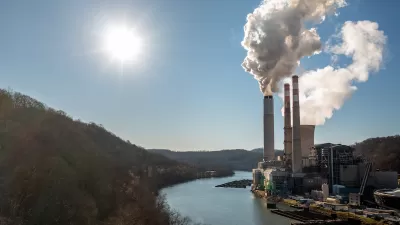A report by the Environmental Law and Policy Center (ELPC) shows a decrease in environmental enforcement in six Midwest states. The ELPC calls for increased funding. The EPA states the claims errors in data reporting are responsible for the drop.

The U.S. Environmental Protection Agency (EPA) is relaxing environmental enforcement, staffing, and spending in six Great Lakes states, according to a report published by the Environmental Law and Policy Center (ELPC).
The EPA's Region 5, which includes Wisconsin, Minnesota, Michigan, Illinois, Indiana, and Ohio, opened fewer environmental enforcement cases since 2017. "The number of cases opened by the agency had hovered at roughly 300 or more until fiscal year 2016 when cases dropped to an average of 230. The group said the data shows there’s also been a sharp increase in the number of major permitted facilities found in significant noncompliance with the Clean Water Act since fiscal year 2017," writes Danielle Kaeding.
EPA funding has declined since the Trump administration took office, resulting in a reduction in fines, civil penalties, and staff, according to the article. State pollution programs have seen a similar drop in funding, falling from about $107 million in 2008 to about $69 million in the 2018 fiscal year.
An EPA spokesperson stated that data reporting issues are "a key reason for recent increases in reported rates of significant noncompliance in Region 5." The agency aims to work with noncompliant permitted facilities to reduce the current rate of sewage overflows by half by 2022.
Howard Learner, executive director of ELPC, argues that the numbers don't add up. Learner asks that the EPA request additional funding from Congress to maintain its resources in addition to spending all currently available funding.
FULL STORY: Environmental Enforcement Down in Midwest

Alabama: Trump Terminates Settlements for Black Communities Harmed By Raw Sewage
Trump deemed the landmark civil rights agreement “illegal DEI and environmental justice policy.”

Planetizen Federal Action Tracker
A weekly monitor of how Trump’s orders and actions are impacting planners and planning in America.

The 120 Year Old Tiny Home Villages That Sheltered San Francisco’s Earthquake Refugees
More than a century ago, San Francisco mobilized to house thousands of residents displaced by the 1906 earthquake. Could their strategy offer a model for the present?

In Both Crashes and Crime, Public Transportation is Far Safer than Driving
Contrary to popular assumptions, public transportation has far lower crash and crime rates than automobile travel. For safer communities, improve and encourage transit travel.

Report: Zoning Reforms Should Complement Nashville’s Ambitious Transit Plan
Without reform, restrictive zoning codes will limit the impact of the city’s planned transit expansion and could exclude some of the residents who depend on transit the most.

Judge Orders Release of Frozen IRA, IIJA Funding
The decision is a victory for environmental groups who charged that freezing funds for critical infrastructure and disaster response programs caused “real and irreparable harm” to communities.
Urban Design for Planners 1: Software Tools
This six-course series explores essential urban design concepts using open source software and equips planners with the tools they need to participate fully in the urban design process.
Planning for Universal Design
Learn the tools for implementing Universal Design in planning regulations.
Clanton & Associates, Inc.
Jessamine County Fiscal Court
Institute for Housing and Urban Development Studies (IHS)
City of Grandview
Harvard GSD Executive Education
Toledo-Lucas County Plan Commissions
Salt Lake City
NYU Wagner Graduate School of Public Service





























